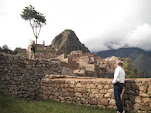Greetings! Continuing with the religious theme of late. This post considers what the Buddha, Jesus, and Muhammed taught about divorce. As you might imagine, the teachings of Buddha, Jesus, and Muhammad on divorce vary, and interpretations may differ among different sects and traditions within each religion. Below is a brief overview based on general perspectives within their respective living traditions.
In Buddhism, the Buddha did not explicitly address divorce
in the same way that some other religious leaders did. However, he did
emphasize the importance of right conduct and ethical behavior. The general
principle in Buddhism is to avoid causing harm to oneself and others. In some
Buddhist cultures, divorce is accepted in cases where it is deemed necessary
for the well-being of the individuals involved.
The primary sources for Buddhist teachings are the Pali
Canon and various sutras. Specific references regarding divorce may not be
found, as the Buddha's teachings cover a wide range of ethical principles.
In Christianity, particularly within the New Testament,
Jesus is reported to have spoken about divorce. In the Gospel of Matthew, Jesus
is quoted as saying that divorce is generally not permissible, except in the
case of adultery (Matthew 19:9). However, interpretations of this passage may
vary among Christian denominations.
Matthew 19:9: "I tell you that anyone who divorces his
wife, except for sexual immorality, and marries another woman commits
adultery."
In Islam, divorce is recognized as a lawful and regulated
process. The Quran acknowledges the permissibility of divorce but encourages reconciliation
whenever possible. The Quran provides guidance on divorce proceedings, and
there are specific conditions and procedures outlined in Islamic law, Sharia.
The Quran, Surah Al-Baqarah (2:229-230): "A divorce is
only permissible twice: after that, the parties should either hold together on
equitable terms, or separate with kindness."
When considering these voices across three major traditions,
it's important to note that interpretations of religious texts can vary, and
different sects within each religion may have different views on divorce. Additionally,
religious teachings are often understood and applied within cultural and
historical contexts, which can influence how they are interpreted and
practiced. Surely that was the case in the time of the Buddha, Jesus, and
Muhammad, much as divorce is a dynamic issue in our time and place.
All the best,
Tom

